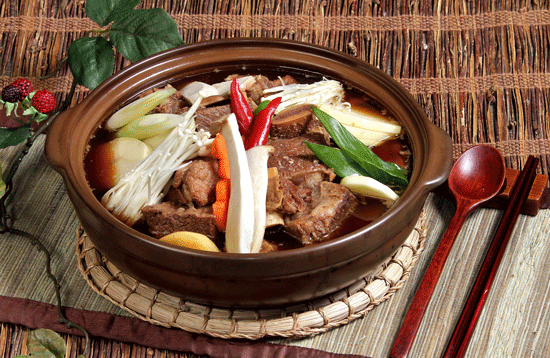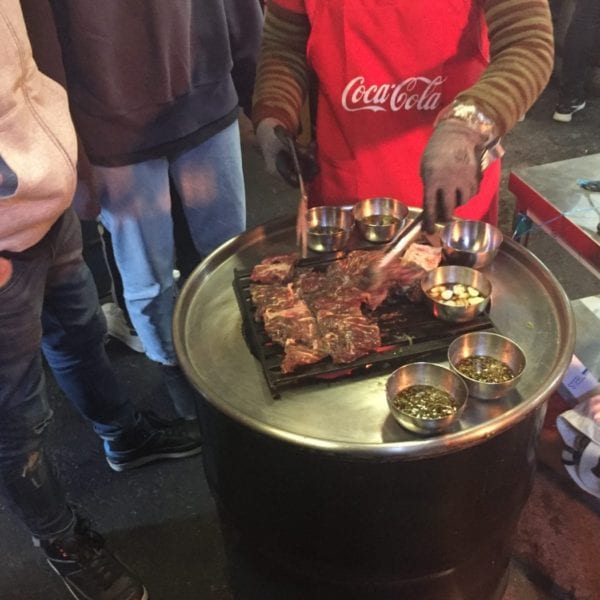Words by Stephen Revere

You may have trouble locating the potato in Korea’s “Potato Stew” but don’t let that stop you from trying Gamjatang.
When the winter hits, we’ve got to stick with another hot and spicy dish to beat the cold. Gamjatang is a beauty for just this purpose, full of spicy goodness and slow-burning pork that will keep you warm well after you throw on that jacket and head back out into the cold.
The funny thing about Gamjatang is that you may have trouble finding the potato despite its name. Rare restaurants won’t even put potato in the stew, but most places will include at least one potato per two servings; you get half a potato.
You may find the name translated as “pork bone stew” or “pork spine stew” for this simple reason, but I prefer sticking to the original.
What you are guaranteed to find in Gamjatang is a nice big hunk of pork backbone. This is a tremendous, tender piece of meat—although it does take a little work to get at it. You may have to pull apart some vertebrae to get at the good parts, but it’s tasty nonetheless. My favorite restaurant for Gamjatang also offers extras to add to the soup. You can get additional “sari” (사리추가) orders of potato, sujaebi (a flour noodle), u-geo-ji (dried Napa cabbage), glass noodles (dangmyeon) and more.
You’ll rarely find Koreans eating this dish at home. Ask 10 Koreans if their moms cook it at home often and you’re likely to get 8 to 9 negative responses. But ask what they think of when they think of Gamjatang, and you’re certain to hear “Soju” from the same percentage. The spiciness of this dish along with its heavy pork flavor make it the perfect accompaniment to imbibing the bitter national liquor, and both are required to be followed by a strong, “Khaaaa” exclamation to show your true appreciation. No, really, try it. It’s certain to come naturally after a few practice swings.
Where To Eat Gamjatang In Seoul
1. Seobu Gamja-guk
Taste tradition at Song-ga-ne Gamja-tang, a beloved spot known for its deeply flavorful broth and tender pork bones. This restaurant has built a reputation for serving some of the most satisfying Gamjatang in the city.
📍 Address: 245 Donggyo-ro, Mapo-gu, Seoul
2. Dongwon
Dongwon is a hidden gem for Gamjatang lovers. The rich, spicy broth combined with perfectly cooked potatoes and pork spine meat makes for a comforting experience.
📍 Address: 48 Toegye-ro 27-gil, Jung District, Seoul
3. Ongdalsem
For a modern take on Gamjatang, Ongdalsem offers a slightly refined version of the dish while maintaining its deep, umami-rich flavors. The broth is simmered for hours, resulting in a smooth yet bold taste. The pork is tender and falls off the bone effortlessly. Located in Mapo, this restaurant is a great option if you’re looking for a cozy yet vibrant dining atmosphere.
📍 Address: 99 Yanghwa-ro 6-gil, Mapo-gu, Seoul
No matter which spot you choose, you’re in for a delicious and satisfying meal. Enjoy your Gamjatang adventure in Seoul!



